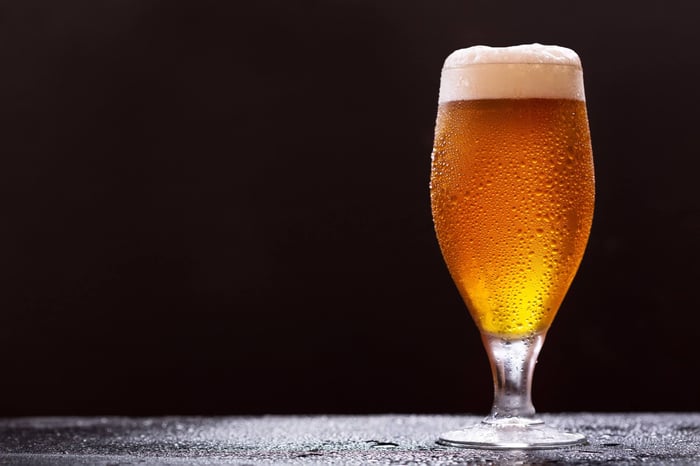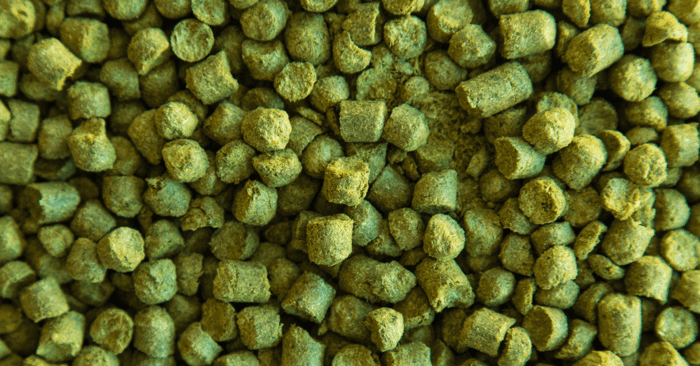Let's address the elephant in the brewery: lagers have earned themselves quite the reputation for being, well, a bit predictable. But here's what we've discovered after years of brewing – that perceived simplicity is actually their greatest strength. When you remove the complex esters and phenols that characterise ale fermentation, you create the perfect stage for showcasing individual ingredients in ways that would be impossible with more assertive yeast strains.
Understanding the Lager Foundation
Lager yeasts (Saccharomyces pastorianus) are bottom-fermenting organisms that thrive at temperatures between 7-13°C, followed by extended conditioning periods at near-freezing temperatures. This cold process fundamentally alters the biochemical pathways, dramatically reducing ester production whilst allowing the yeast to slowly process potentially harsh compounds over weeks or months.
The result is a flavour profile that's remarkably transparent – every ingredient decision you make will be clearly audible in the final beer. This transparency is what makes experimental lager brewing so rewarding and, frankly, so educational.
Light Lagers: Subtle Innovation Mastery
Target Profile: Sub-4.5% ABV, maximum refreshment
These styles demand a delicate touch. Think of them as the watercolour paintings of the beer world – every brushstroke matters, and there's nowhere to hide mistakes.
Grain Bill Strategy Base your recipe on 60-75% quality Pilsner malt, then incorporate adjuncts strategically. Traditional rice or maize (up to 40%) provide that characteristic lightness, but consider alternatives: flaked wheat (5-10%) adds a subtle texture variation, whilst small amounts of Munich malt (2-5%) can provide barely perceptible complexity.
The Honey Question European honeys – particularly acacia or linden – can transform a simple light lager when used judiciously (2-4% of fermentables). The key is selecting varietals that complement rather than compete.
Hopping Philosophy Noble varieties like Saaz, Spalt, or Hallertau Mittelfrüh are traditional for excellent reasons, but modern European varieties like Mandarina Bavaria or Blanc can add contemporary character whilst maintaining drinkability. Keep IBUs low (8-15) but ensure sufficient bitterness to provide structure.
Process Innovation: Consider running parallel fermentations with different lager strains – W-34/70, SafLager S-23, and specialty strains like Augustiner – then blend to achieve unique flavour profiles.
Pale Lagers: The Continental Standards
ABV Range: 4.5-6.0% – the backbone of European beer culture
From Czech Pilsner to German Helles, these styles represent centuries of refinement. They're also perfect canvases for thoughtful experimentation.
Advanced Malt Techniques Build complexity through process rather than just ingredients. Traditional decoction mashing creates Maillard reactions that produce subtle caramel and bread notes impossible to achieve through grain additions alone. If time constraints prevent full decoction, try a protein rest at 50-55°C followed by a single temperature infusion at 65°C.
Speciality Malt Integration Vienna malt (10-20%) adds colour and gentle nuttiness, whilst small amounts of CaraPils or Carafoam (2-5%) can improve head retention without affecting flavour. For experimental versions, consider Briess Victory malt (2-3%) for subtle toasted notes.
Hop Innovation Within Tradition Single-hop experiments work brilliantly in pale lagers. Try Tettnang for spicy complexity, or modern varieties like Huell Melon for subtle fruit character. The clean fermentation profile means you're tasting pure hop character – educational and delicious.
Amber and Dark Lagers: Seasonal Sophistication
These styles coincide beautifully with European autumn and winter traditions, making them ideal for seasonal ingredient incorporation.
Complex Malt Symphonies Dark lagers allow for sophisticated malt layering. Munich malt can comprise 20-40% of your grain bill, providing rich bread and honey notes. Add complexity with CaraMunich (5-10%) for toffee undertones, or small amounts of Carafa Special for colour without harshness.
Regional Ingredient Integration Consider incorporating ingredients that reflect European terroir: German Spelt for texture variation, Belgian Candi sugar for subtle complexity, or even small amounts of beechwood-smoked malt for that traditional Rauchbier character.
Seasonal Additions Autumn hazelnuts, winter spices like cinnamon or star anise (used sparingly), or even European fruit additions can transform these beers. The key is restraint – lagers should complement these additions, not mask them.
Advanced Techniques: Try adding fruit during secondary fermentation or conditioning phases to preserve delicate flavours whilst avoiding fermentation complications.
High-Strength Lagers: Breaking Boundaries Respectfully
6%+ ABV – where tradition meets innovation
Strong lagers – from Helles Bock to experimental India Pale Lagers – provide the alcohol backbone necessary for bold experimentation whilst maintaining lager character.
Bock Tradition Variations Traditional Bocks rely on extensive Munich malt character and long lagering periods. Experiment with different Munich malt suppliers – Weyermann, Best Malz, and Castle Malting each contribute unique flavour profiles. Try varying your lagering temperatures: start at 2°C for two weeks, then drop to -1°C for extended conditioning.
India Pale Lager Territory IPLs represent exciting innovation within lager brewing. Use 80-90% Pilsner malt base with light crystal additions (5-10%). Hop varieties like Mosaic, Citra, or European newcomers like Callista can provide tropical fruit character that shines through clean fermentation.
Barrel Ageing Considerations European oak (French or Hungarian) imparts different character than American oak. Consider neutral wine barrels for subtle integration, or experiment with spirits barrels for bolder flavours. The clean lager base means wood character will be prominent – plan accordingly.
Your Experimental Framework
Start with solid foundations. Master classic styles before pushing boundaries – understanding traditional flavour profiles helps you recognise when innovations enhance or detract from the beer.
Document everything meticulously. European brewing tradition emphasises consistency and reproducibility. Keep detailed records of ingredients, processes, and outcomes. That subtle improvement you notice might become your signature technique.
Embrace seasonal brewing cycles. European brewing calendars exist for good reasons – work with natural temperature cycles and seasonal ingredient availability rather than against them.
The Grainfather Team









